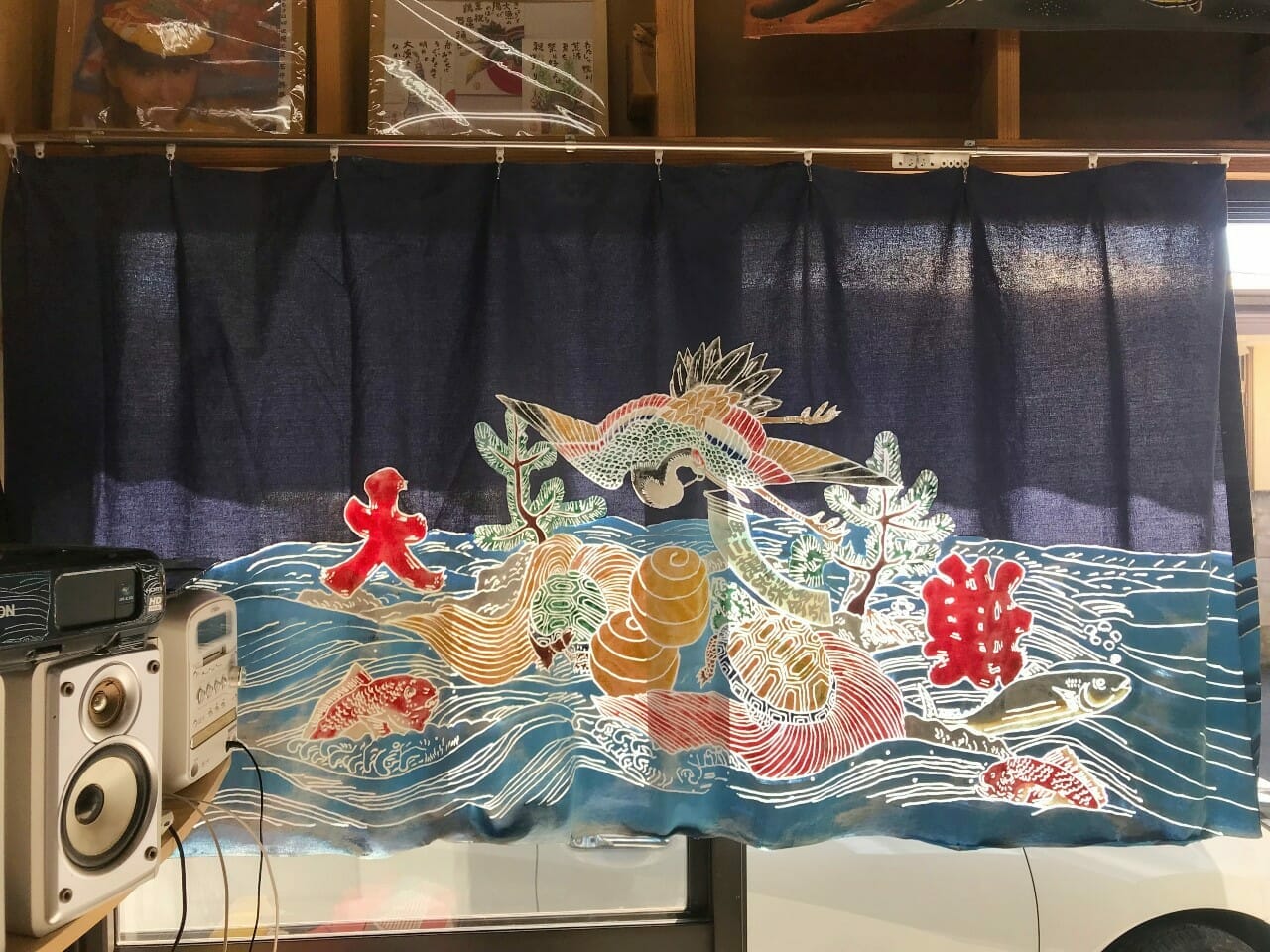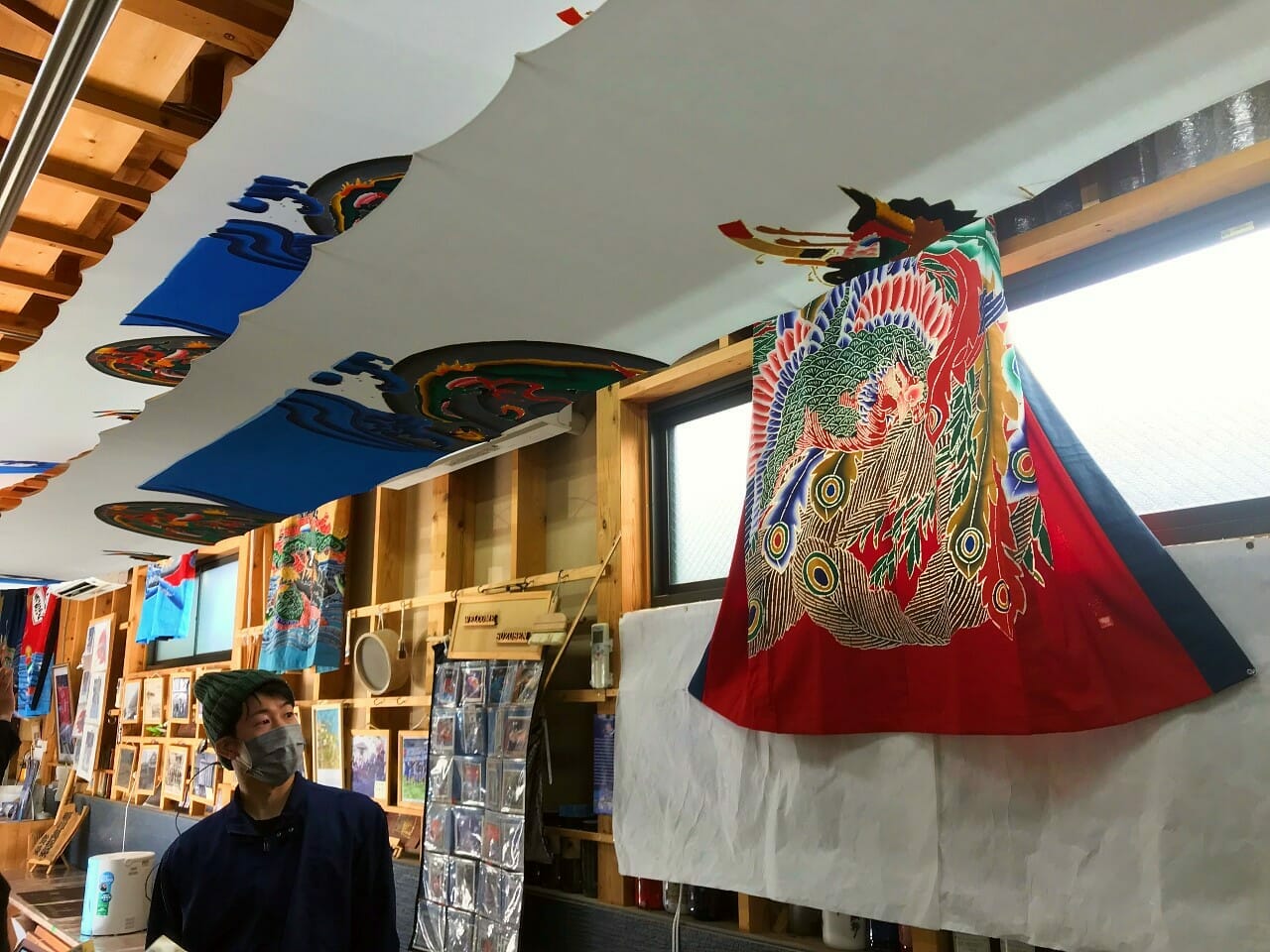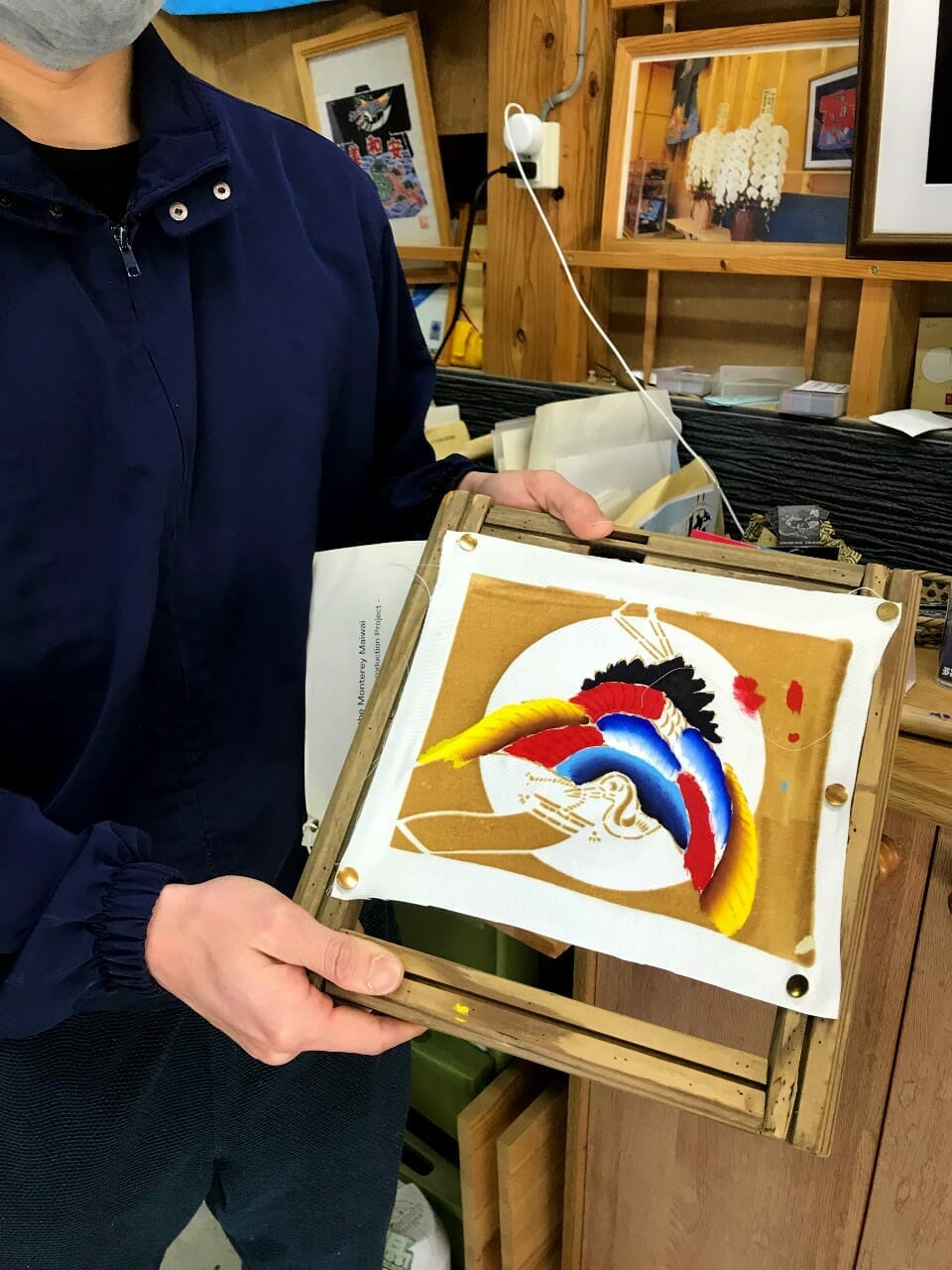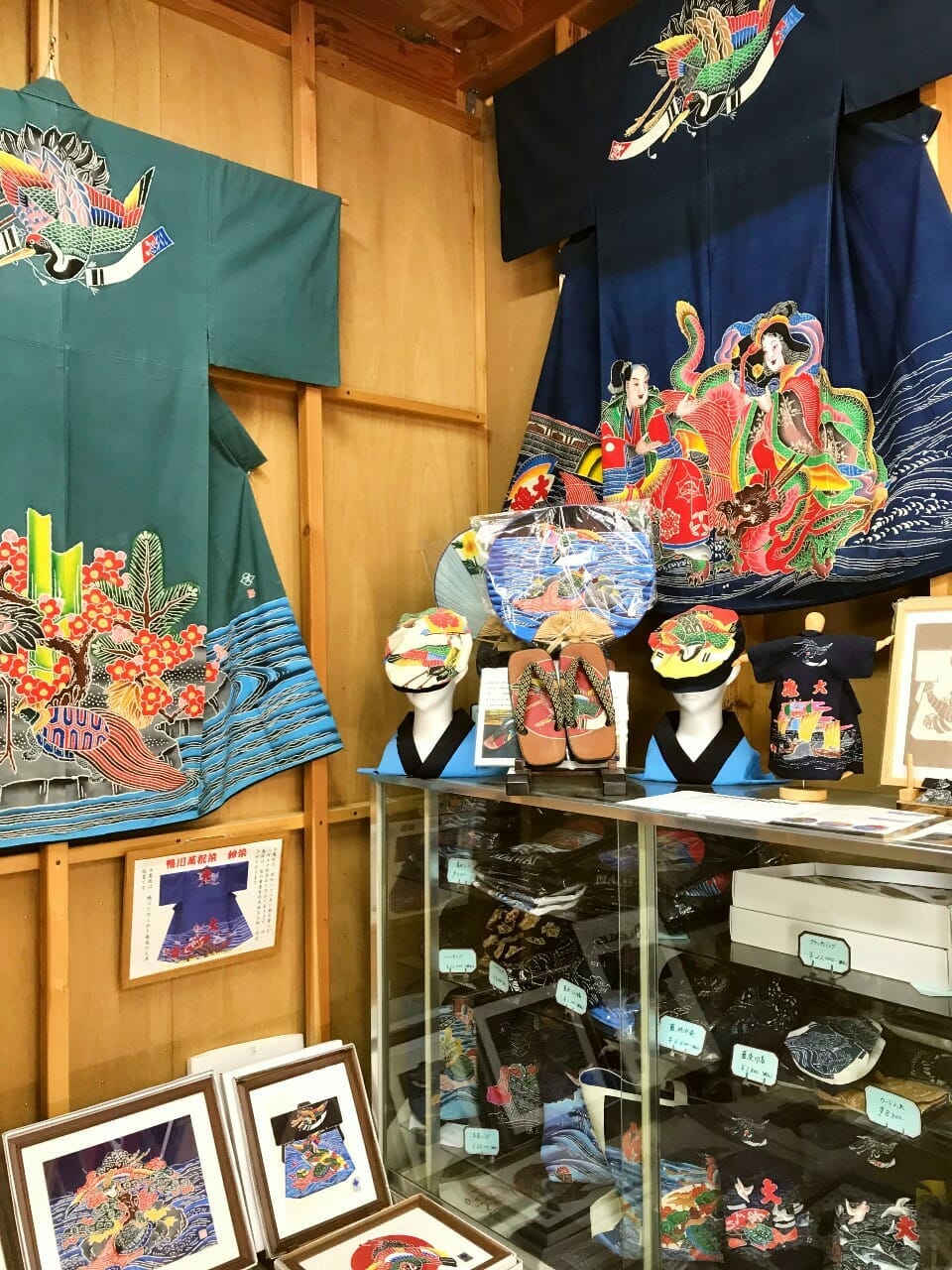
Locals’ Recommendations | Visit Chiba | Latest update:2022/10/03
America・Wisconsin
There are very few opportunities to interact with “living history” but at the MAIWAI SUZUSEN you can see the product of centuries of art and design continue to thrive. I met Riki Suzuki of SUZUSEN when I first moved to Kamogawa. At that time, I had no idea he was one of a handful of people in Japan keeping this traditional art alive. Riki is the 4th generation in a line of textile makers and dyers, specifically making a maiwai. Historically speaking, maiwai dyeing was a textile art developed in the Edo period (1603 – 1868) and originating in this area of Southern Chiba. Demarcated by its vivid colors set on a traditionally indigo background, these dyed cloths were commissioned and bought by fisherman after a large catch.

Originally, these maiwai weren’t immediately made to be kimono but rather, were given to the wives of fishermen who would transform the cloth into a garment to be worn. In the current day, however, Riki and his family’s workshop carry out the entire process of designing the garment through tailoring it into a maiwai kimono or hanten pattern. Nowadays, it isn’t only fishermen who commission these beautiful garments but families, individuals, and businesses who want to celebrate their good fortune with a time-honored craft.


Given the intense coloring of the designs, it would be easy to assume that these pigments are artificially made to enhance their vibrancy. This is not the case, however. Riki makes each of these pigments using naturally sourced dyes and mixing them with a soybean mixture. In fact, the dyeing process includes all organic pigments and materials. Visitors interested in getting a small taste of the making process, can learn quite a bit from a workshop that Riki’s workshop offers. MAIWAI SUZUSEN has information on their process, the history of maiwai, and how to contact them on their website.

Talking to Riki about the history of designing into the current day was eye-opening. Though maiwai historically have included themes and motifs of prosperity and longevity–such as the crane or tortoise–more current designs include dragons, flowers, and offer room for collaboration among other textile crafts in Japan. On display in the workshop, you can find more experimental pieces, such as a kimono styled to only include the indigo dye and stenciled cutouts, or a collaborative garment that includes Okayama denim on the sleeves. Maiwai have been an important staple of the textile history of Kamogawa and throughout Japan, so to see the ongoing life of this age-old craft is truly a one-of-a-kind experience.
620-1 Yokosuka, Kamogawa City
(A 10-minute walk from JR Awa-Kamogawa Station)
+81-4-7092-1531